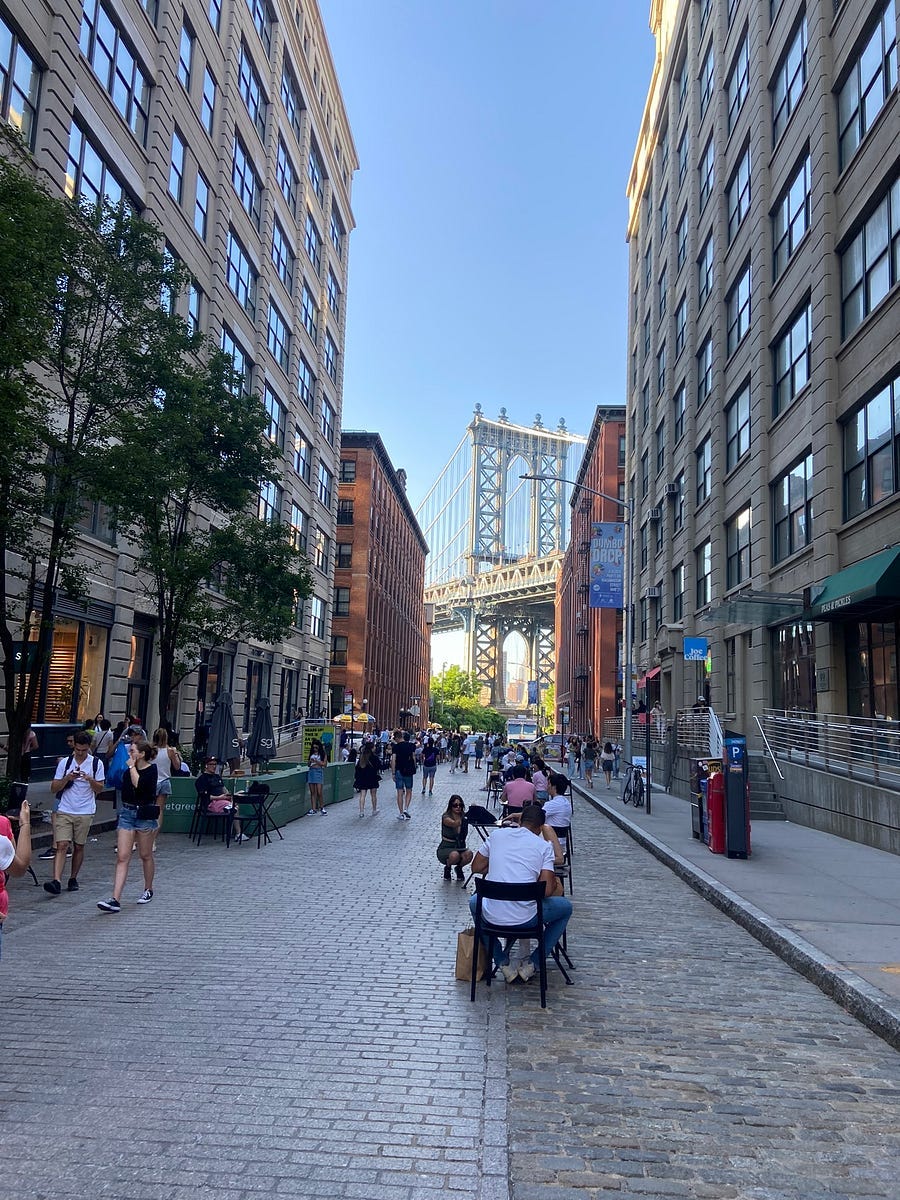How walkable cities can help us combat climate change?
Walkable cities can fight climate change better than EVs. Explore how smarter zoning, density, and design can lower energy use and boost urban resilience.
A Climate Solution We Rarely Talk About

While we often hear about green technologies and reducing greenhouse gases, we almost never hear about how walkable cities could help us with climate change.
What the Climate Data Shows
Every ten years, the National Centers for Environmental Information (NCEI), part of NOAA, updates U.S. climate data based on the last 30 years. The climate normal tracks key information like temperatures, precipitations, and snowfalls throughout the United States (US). The latest climate normal is based on the 1991 to 2020 data.
When looking at the latest 30 year annual temperature changes we can see that the US is generally getting warmer. However, not all regions of the US are warming up at the same rate or experiencing climate change in the same manner.
Another interesting map series features the precipitation changes. The last 30 year average for the US shows the South West getting dryer while the Central and North Eastern portion of the US is getting more rainfall. The maps also show us why climate change is more appropriate to describe changes in weather pattern than global warming.
In short, climate change is more than just temperature and precipitation. The consequences of climate change can impact, drought, wild fire, flooding, rising sea levels and more.
Now let us examine how something as simple as a walkable neighborhoods, towns, and cities can help us reduce the consequences of climate change.
Why Walkability Can Beat EVs
Many people say electric vehicles (EVs) are a major solution to climate change. While EVs are better than internal combustion engines (ICEs) — even if the electricity source isn’t fully green — they still rely on the same road-heavy, car-dependent system.
The environmental cost of maintaining roads, highways, and parking lots will continue. EV batteries also require mining of key materials, which consumes energy and pollutes the planet.
The Energy Return on Investment Advantage
As long as cities are designed around cars, we will keep squandering energy. The concept of Energy Return on Investment (EROI) measures how much energy is required to produce new energy.
Walking has the best EROI of any mode of transportation — it requires almost no external energy. (For a deeper dive into EROI and how smarter urban design boosts energy returns, see my article “From Energy Drain to Energy Gain”.) Cars, whether gas or electric, require massive infrastructure and resources to support. Walkable cities, by design, have the best EROI and the lowest environmental impact.
It should be pretty obvious that if we quantify how much energy it takes to power EV or ICE that walking is the most energy and environmentally friendly means of transportation. Also, the more roads we have, the more energy we have to utilize to sustain that system. In summary, walkable cities have the best EROI and are best for the environment.
In order to make more neighborhoods, towns, and cities walkable, we need to change the regulations and mandate walkability as a priority over cars. For instance, Cities should avoid single-use zoning and instead emphasize mixed-use zoning. Ideally, walkable cities should not be as dense as Manhattan but rather a combination of mixed use of medium and low density. We need to invest on building and fixing our railroad system to make public transportation to work efficiently. By living closer to work, we can also conserve energy and save time. In short, this is not about banning cars from cities, but rather to make cities walkable so that cars become optional or complemental rather than the main mode of transportation.
Examples from U.S. Cities
New York City is an example of an extremely dense and walkable city with great public transportation. However, if we are serious about climate change, New York City is not the perfect model. The city’s supertall buildings require tremendous amounts of energy to build and maintain, and its extreme density can intensify urban heat islands.
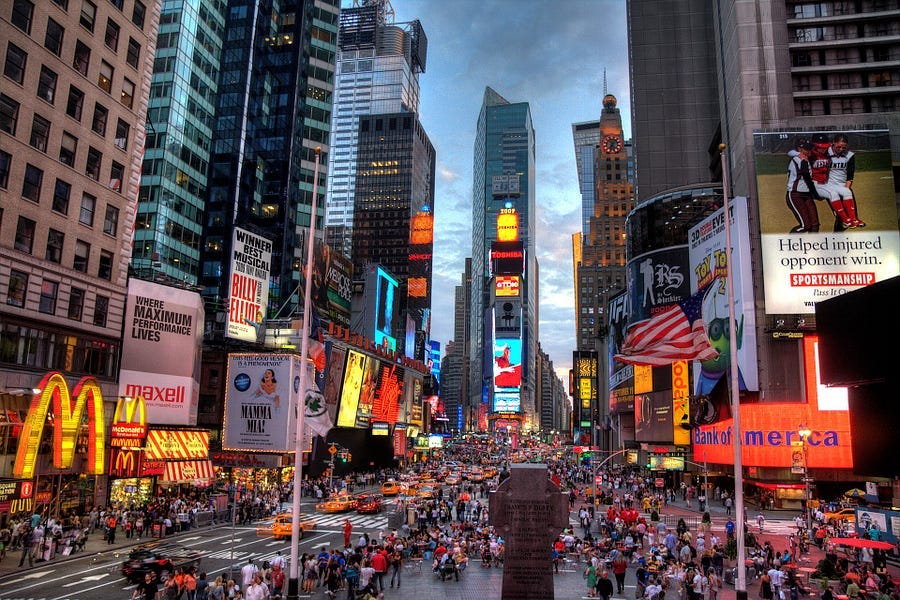
Another aspect of skyscrapers and high density is that they can create heat islands which can create higher temperatures compare to outlying areas. The EPA has some great information about Heat Islands.
By contrast, parts of Brooklyn offer a more human-scaled urban form — mid-rise buildings, wider streets, and active public spaces. While still dense and transit-friendly, this scale is more energy-efficient to maintain and often more comfortable in hot weather. It demonstrates that walkable, transit-oriented neighborhoods don’t need to reach Manhattan’s extreme heights to be vibrant and climate-conscious.
The central part of Washington DC is walkable and the buildings are of reasonable height. For a good urban density, we need to strive between not too low or too high.
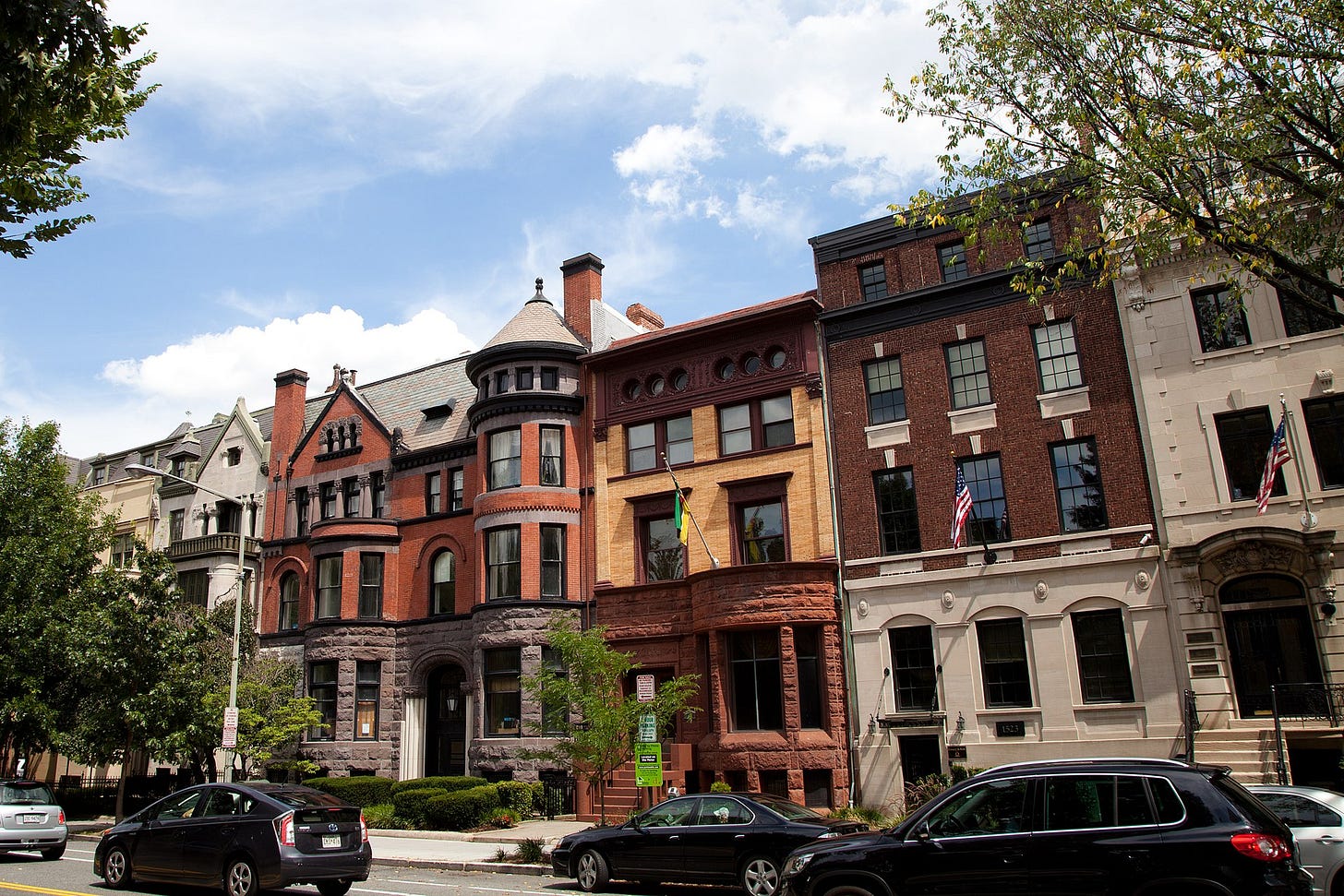
Washington DC also has some nice neighborhoods such as the Georgetown area which are pretty and inspires you to go on a walk.
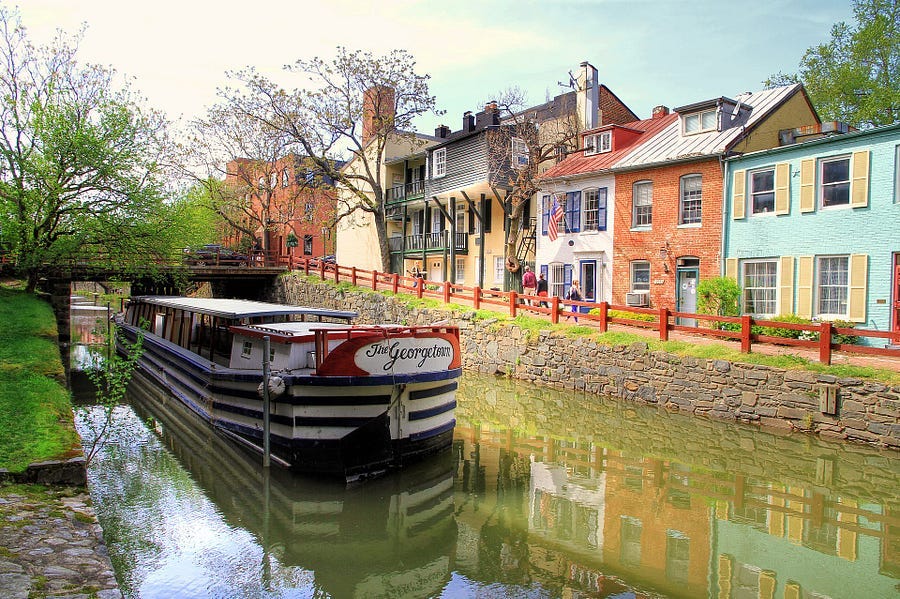
San Francisco is another large city with wonderful and scenic urban landscape.
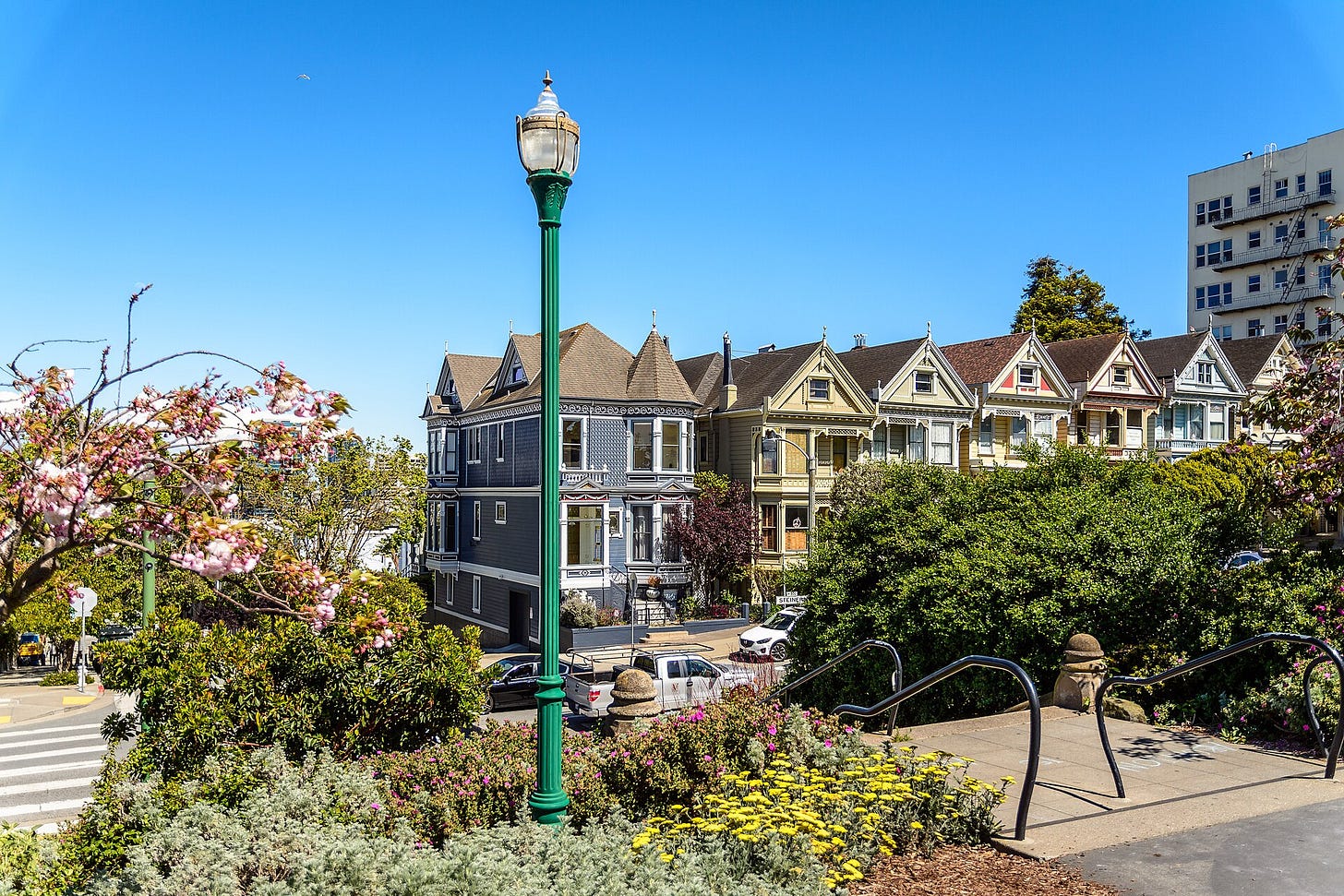
Human being have a natural desire for walkable neighborhoods. The cost of real estate alone in San Francisco indicates that people are willing to pay exorbitant prices in order to live in a pedestrian friendly city. Unfortunately, we have a scarcity of well-designed Cities in America and the select few who enjoy this lifestyle are mostly the wealthier Americans. Everyone in America regardless of their socioeconomics or the color of their skin deserve well-designed cities.
The historic part of the City of Savannah is of much lower density than Washington D,C but it is still very enjoyable to walk on. The historical neighborhood next to the commercial downtown features a great mixtures of shade trees in the streets and public squares which provide some much needed relief from the summer heat.
Savannah’s historic district offers lower density than D.C., but it’s still a joy to walk. Its shade trees and public squares provide relief from the summer heat — and the parks are more than just green space.
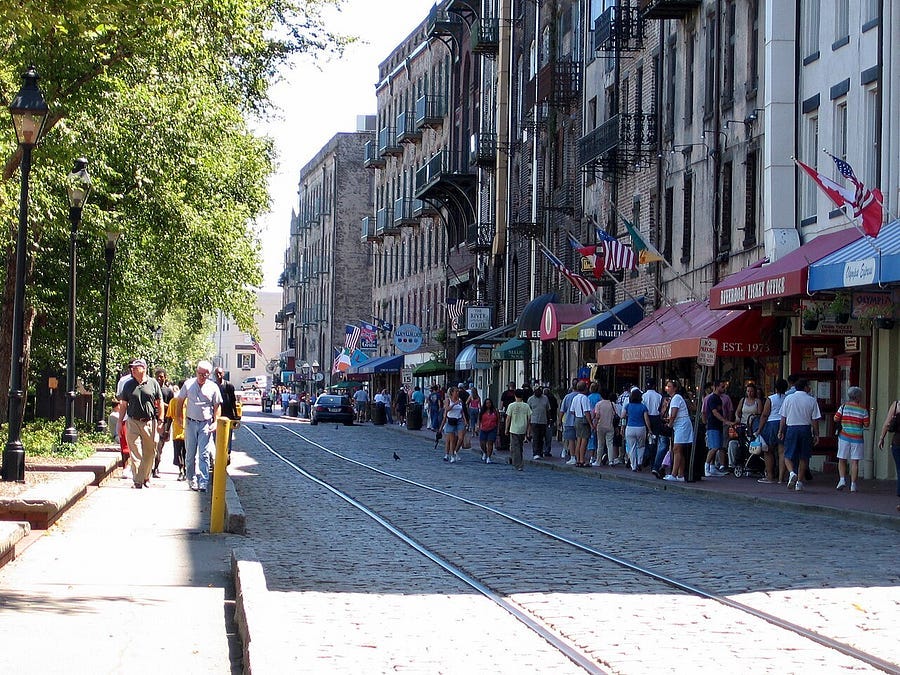
Forsyth Park, anchored by its iconic fountain, is a reminder that walkability thrives when public spaces invite people to linger, connect, and recharge. Parks like these are not just amenities; they’re community living rooms where residents empower one another, share stories, and build a sense of belonging. In designing for walkability, we must remember that the destination can matter just as much as the journey.
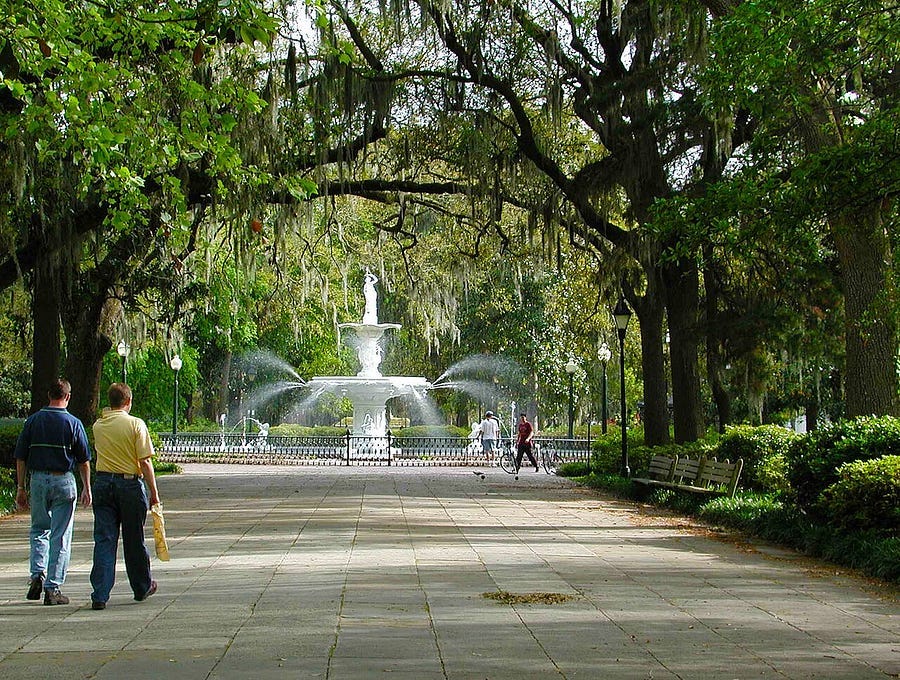
Of course not everyone needs to live in Cities. Even small towns like Telluride in Colorado can be walkable. Telluride has a great main street as well as side streets that are walkable.
Walkability Is About Equity
After World War II, urban development in the United States shifted heavily toward suburbanization. Streetcars and dense, mixed-use neighborhoods gave way to low-density subdivisions, separated land uses, and highways that prioritized the car over the pedestrian or mass transit. This design pattern drastically reduced walkability in many cities and towns, making car ownership a practical necessity for daily life.
Today, the remaining pockets of pre-war, walkable urbanism are often historic districts or older neighborhoods built before auto-centric planning took hold. These areas — with their tree-lined streets, connected grids, and proximity to amenities — are in high demand. Unfortunately, this demand often drives up property values, leading to gentrification. Wealthier residents move in, while long-time, less affluent residents are priced out.
That’s why walkability is about more than convenience or climate resilience — it’s also about equity. Everyone, regardless of income or background, should have access to safe, comfortable, and human-scaled places to live, not just those who can afford to buy into the surviving “relics” of people-centered design.
The Path Forward
Retrofitting cities, towns, and suburbs for walkability will take time, but it’s possible. As the saying goes, “Rome wasn’t built in a day.”
Climate change doesn’t care about political affiliation. We can design communities that work for people and the planet. The sooner we start, the sooner we can build communities that are both livable and resilient for generations to come.
Disclaimer: The views expressed in this article are solely my own and do not reflect those of any public agency, employer, or affiliated organization. This blog aims to educate and empower readers through objective geographic and planning insights, fostering informed discussion on global and regional issues.



